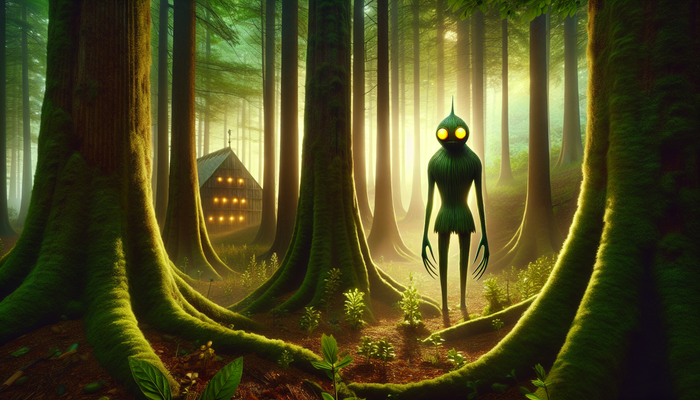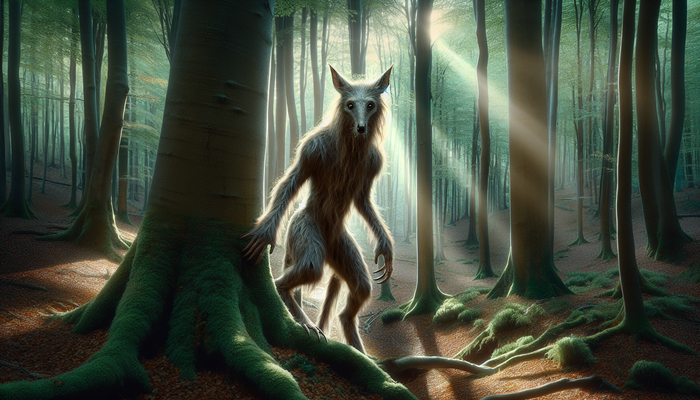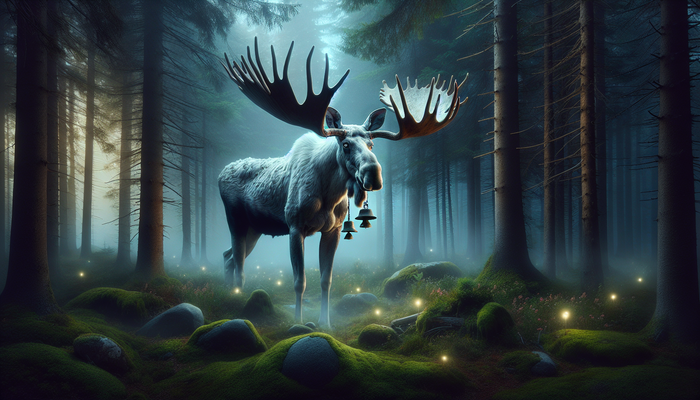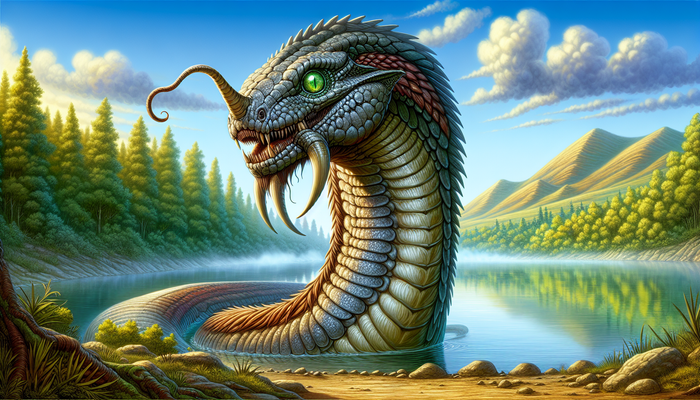The Alaskan Lake Monster: Secrets of Lake Iliamna's Legendary Creature
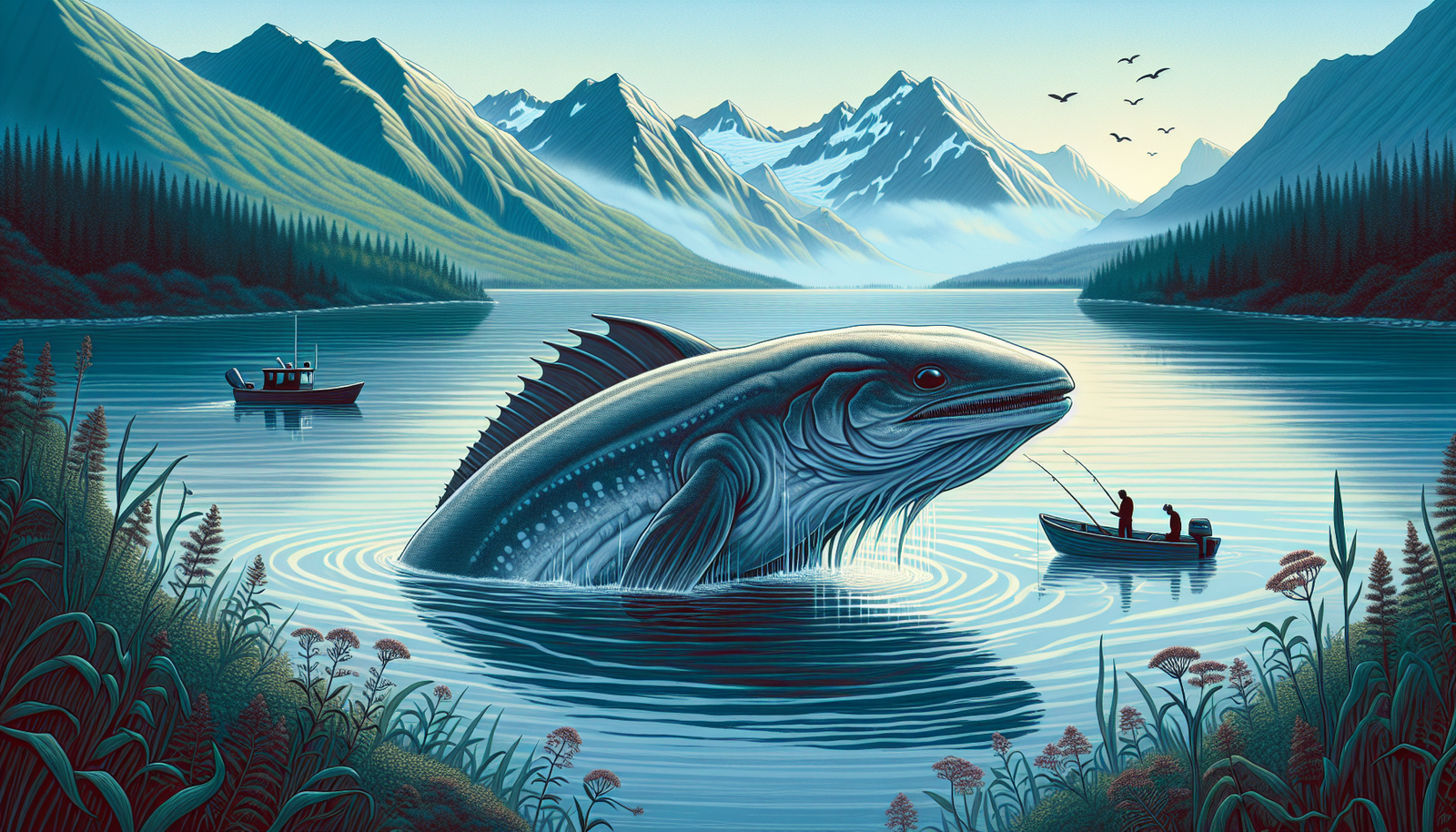
By Anthony Romano, Cryptozoologist
A Lake of Mythic Proportions
To understand the legend of Illie, we first need to appreciate the sheer scale and remoteness of Lake Iliamna. Spanning approximately 1,000 square miles, this inland sea stretches 77 miles long and 22 miles wide, with depths plunging to nearly 1,000 feet in places. To put it in perspective, you could fit the entire city of New York comfortably within its borders and still have room to spare.
The lake's vastness is matched only by its isolation. Nestled in the southwestern part of Alaska, Lake Iliamna is primarily accessible by floatplane, with no roads connecting it to the outside world. This remoteness has allowed the lake to maintain an air of mystery, fueling the imagination of those who hear tales of its hidden depths.
But Lake Iliamna isn't just a blank canvas for folklore. It's a thriving ecosystem, teeming with life. The lake serves as a critical spawning ground for millions of sockeye salmon, supporting a rich variety of wildlife including a unique population of freshwater harbor seals. This abundance of life has led some to speculate: could it also support something... larger?
Whispers from the Past
The legend of a creature inhabiting Lake Iliamna didn't start with modern sightings. It's deeply rooted in the traditions of the indigenous peoples who have called this region home for thousands of years. The Tlingit people speak of "Gonakadet," a powerful being they describe as a "fish god." In their stories, Gonakadet is portrayed with the head of a wolf and the body of an orca, a fearsome combination that commanded respect and caution.
Similarly, the Aleut people tell tales of "Jig-ik-nak," a monstrous fish-like creature that was said to travel in groups and attack canoes, sometimes killing warriors foolish enough to venture too far from shore. These stories weren't just entertainment; they served as warnings, teaching respect for the lake and its potential dangers.
It's tempting to dismiss these legends as simple myths, but consider this: many indigenous stories once thought to be purely fictional have later been found to contain kernels of truth, preserving ancient knowledge of real animals or events. Could the tales of Gonakadet and Jig-ik-nak be early descriptions of a real, albeit unusual, inhabitant of Lake Iliamna?
The Modern Monster Emerges
While indigenous legends had long hinted at something strange in Lake Iliamna, it wasn't until the 1940s that modern sightings began to capture widespread attention. The advent of aviation opened up new perspectives on the lake, quite literally, as bush pilots began to report unusual sights from their aerial vantage points.
One of the most notable early sightings came in 1942 when bush pilots Babe Alyesworth and Bill Hammersley were flying over the lake. They reported seeing several large, dull aluminum-colored fish that they estimated to be at least 10 feet long. What struck them wasn't just the size, but the behavior. The creatures moved with a side-to-side tail motion, unlike the up-and-down movement typical of whales. This detail would become a recurring theme in later sightings.
As word spread, more people began to come forward with their own stories. In 1963, a biologist flying over the lake observed what he described as a fish between 25 and 30 feet long. What made this sighting particularly intriguing was that the creature never surfaced for air during the entire 10-minute observation.
These early reports set the stage for decades of sightings to come, each adding new details to the growing legend of the Iliamna Lake Monster.
The $100,000 Question
By 1979, the legend of Illie had grown to such proportions that it caught the attention of the Anchorage Daily News. In a move that catapulted the Iliamna Lake Monster to national attention, the newspaper offered a $100,000 reward for anyone who could provide conclusive evidence of the creature's existence.
This challenge ignited a frenzy of monster-hunting activity. Adventurers, scientists, and thrill-seekers descended on Lake Iliamna, armed with everything from fishing gear to sophisticated sonar equipment. Some approached the hunt with scientific rigor, while others... well, let's just say their methods were more creative than credible.
One enterprising individual reportedly tried to lure the monster to the surface by playing classical music over loudspeakers. Whether Illie has a taste for Mozart remains unconfirmed, but the attempt certainly added a touch of whimsy to the search.
Despite the considerable incentive and the flurry of activity it inspired, the reward went unclaimed. No one managed to produce the smoking gun—or in this case, the monster fin—needed to prove Illie's existence beyond a shadow of a doubt.
But far from putting the legend to rest, the failed hunt only seemed to deepen the mystery. If there was nothing unusual in Lake Iliamna, why had so many credible witnesses reported seeing something? And if there was a monster, how had it managed to elude capture or definitive proof for so long?
The Plot Thickens: Notable Sightings
While the newspaper's challenge may not have produced concrete evidence, it did bring more attention to the numerous sightings that had occurred over the years. Let's take a closer look at some of the most compelling accounts:
- 1977: Pilot Tim LaPorte and his passengers were flying over Pedro Bay when they spotted what they described as a 12-14 foot fish on the surface. As their plane approached, the creature made what LaPorte called a "big arching splash" and dove straight down, revealing a vertical tail. The detail about the vertical tail is particularly interesting, as it doesn't match the typical profile of known fish in the lake.
- 1987: Local resident Verna Kolyaha reported seeing a large black fish with a distinctive white stripe down its fin. This sighting added a new detail to the creature's description, suggesting it might have markings that set it apart from other lake dwellers.
- 1988: Multiple locals, both on the water and from the shore, reported seeing a large black fish with a prominent fin swimming near the surface. The consistency in these reports, coming from different vantage points, lends credibility to the sightings.
- 2017: In one of the most dramatic recent sightings, residents of the village of Kokhanok reported seeing not just one creature, but a group of them. The largest was estimated to be between 50-60 feet long. Witnesses described the creatures as blowing water into the air, similar to whales. This sighting is particularly intriguing because it suggests the possibility of a breeding population, rather than a single anomalous individual.
What makes these sightings compelling isn't just the details they provide, but the credibility of the witnesses. Many are experienced pilots, fishermen, or long-time residents of the area—people who are intimately familiar with the lake and its known inhabitants. When individuals with this level of local knowledge report seeing something out of the ordinary, it's worth paying attention.
Moreover, the consistency in the descriptions across different sightings, often separated by years or even decades, is striking. While details vary, certain elements remain constant: the large size, the fish-like appearance, and the unusual behavior that sets these creatures apart from known species in the lake.
Theories: What Could Illie Be?
As sightings of the Iliamna Lake Monster have accumulated over the years, so too have theories about its identity. Let's examine some of the most prominent hypotheses:
1. Giant White Sturgeon
One of the most popular theories is that Illie could be a giant white sturgeon. These prehistoric-looking fish can grow to impressive sizes, with some specimens reaching lengths of over 20 feet. Their appearance, with a long body and bony plates along their back, could potentially match some of the descriptions of the lake monster.
The sturgeon theory has some compelling points in its favor. Sturgeons are known to inhabit waters connected to the Pacific Ocean, and given Lake Iliamna's connection to Bristol Bay via the Kvichak River, it's not impossible that they could have made their way into the lake. Their bottom-dwelling nature could also explain why sightings are relatively rare.
However, there's a catch: while white sturgeon are found in parts of Alaska, there's no documented evidence of them in Lake Iliamna. If a population of giant sturgeon does exist in the lake, it has somehow managed to elude scientific confirmation.
2. Pacific Sleeper Shark
Another intriguing possibility is that Illie could be a Pacific sleeper shark. These deep-sea dwellers can grow up to 20 feet long and are known for their elusive nature. Marine biologist Bruce Wright has been a proponent of this theory, suggesting that sleeper sharks might have adapted to freshwater and found their way into Lake Iliamna.
The sleeper shark hypothesis could explain some of the monster's reported behaviors, such as its ability to stay submerged for long periods without surfacing. It could also account for the creature's size and shape as described in many sightings.
However, like the sturgeon theory, this idea faces some challenges. While sleeper sharks are highly adaptable, there's no confirmed case of them permanently inhabiting freshwater. The physiological changes required for such an adaptation would be significant.
3. Beluga Whales
Given Lake Iliamna's connection to the ocean, some have speculated that the monster sightings could be explained by beluga whales that have made their way up the Kvichak River. Belugas are known to sometimes venture into freshwater, and their white color could potentially match some descriptions of Illie.
However, this theory struggles to account for many aspects of the reported sightings. Belugas are generally much smaller than the creature described in most Iliamna Monster accounts, and their behavior patterns don't match the reported sightings. Moreover, if belugas were regularly entering the lake, it's likely they would have been definitively identified by now.
4. Unknown Species
Perhaps the most tantalizing theory is that Illie represents an entirely unknown species. Could Lake Iliamna be home to a creature that has somehow escaped scientific classification? While it might seem far-fetched in our modern, well-mapped world, it's worth remembering that new species are still being discovered regularly, especially in remote or hard-to-access environments.
The vast size and depth of Lake Iliamna, combined with its relative isolation, could potentially provide habitat for a large, unknown aquatic species. This theory would explain why the creature has proven so elusive and why its descriptions don't neatly match any known animal.
However, the unknown species hypothesis faces significant challenges. For a breeding population of large animals to exist in the lake without definitive proof is increasingly difficult in an age of satellite imagery and advanced scientific techniques. Moreover, such a creature would need a substantial food source, which would likely have observable effects on the lake's ecosystem.
Each of these theories has its strengths and weaknesses, and the debate continues among researchers, locals, and monster enthusiasts. The truth about Illie may lie somewhere in between these hypotheses, or it may be something we haven't yet considered.
Scientific Investigations: Searching for Illie
While many have been content to speculate about the Iliamna Lake Monster from afar, others have taken a more hands-on approach. Over the years, there have been several attempts to apply scientific methods to the search for Illie.
One of the most persistent researchers has been Bruce Wright, a former marine ecologist with the National Marine Fisheries Service. Wright has been investigating the Iliamna Lake Monster for years, bringing a scientific perspective to the search.
In recent years, Wright has teamed up with Mark Stigar, a retired colonel and wildlife enthusiast, to deploy underwater cameras in the lake. Their goal is to capture footage of whatever might be lurking in Iliamna's depths. While they haven't managed to film the monster yet, their efforts have provided valuable data about the lake's ecosystem.
In 2019, Wright and Stigar set up a sophisticated camera system in an area of the lake where sightings have been reported. The camera was baited with fish to attract any large predators in the area. While they didn't capture footage of a monster, they did record some interesting activity. At one point, something large enough to move their heavy equipment interacted with the camera rig, though it remained frustratingly out of frame.
Other researchers have proposed using environmental DNA (eDNA) sampling to search for evidence of unknown species in the lake. This technique involves analyzing water samples for traces of DNA shed by organisms in the environment. It's been used successfully to detect rare or elusive species in other aquatic environments and could potentially provide evidence of Illie's existence—or at least narrow down what it might be.
The challenges of scientifically investigating the Iliamna Lake Monster are considerable. The lake's vast size and depth make comprehensive searches difficult and expensive. The remote location adds logistical complications, and the creature's reported elusiveness means that even well-planned expeditions may come up empty-handed.
Despite these obstacles, scientific interest in the Iliamna Lake Monster persists. Each new study or expedition brings the possibility of a breakthrough—whether that's definitive proof of Illie's existence or a rational explanation for the decades of sightings.
The Cultural Impact of Illie
Whether or not the Iliamna Lake Monster turns out to be real in a biological sense, there's no denying its reality as a cultural phenomenon. Illie has become an integral part of local folklore, a symbol of the mysteries that still exist in the Alaskan wilderness.
For the communities around Lake Iliamna, the monster has become a point of pride and a source of identity. Local artists incorporate Illie into their work, creating everything from paintings and sculptures to t-shirts and postcards. The creature has inspired storytellers, with tales of Illie being passed down through generations, evolving and growing with each retelling.
The legend has also had a significant impact on tourism in the area. While Lake Iliamna's remote location means it will never see the kind of monster-hunting tourism that descends on Loch Ness, the possibility of spotting Illie adds an extra thrill for visitors to the region. Fishing guides often regale their clients with tales of the monster, adding a touch of mystery to their excursions.
But the cultural significance of the Iliamna Lake Monster goes beyond mere tourism or local color. In many ways, Illie represents the enduring mystery of the natural world, especially in a place as vast and wild as Alaska. In an age where it can feel like every corner of the globe has been explored and explained, the idea that a large, unknown creature could be lurking in a lake is both thrilling and humbling.
The legend of Illie serves as a reminder of the limits of our knowledge and the potential for discovery that still exists. It speaks to a very human desire for wonder and mystery, a need to believe that there are still secrets out there waiting to be uncovered.
Moreover, the Iliamna Lake Monster has become a symbol of conservation for some. The argument goes that if such a large and unusual creature could potentially exist in the lake, then the ecosystem must be preserved and protected. In this way, Illie has become a mascot of sorts for environmental efforts in the region.
The Future of the Iliamna Lake Monster
As we look to the future, what can we expect for the legend of the Iliamna Lake Monster? Will Illie remain a mystery, or will advances in technology and scientific methods finally provide a definitive answer?
One thing is certain: interest in the creature shows no signs of waning. As long as there are unexplained sightings and compelling stories, people will continue to be fascinated by the idea of a monster in Lake Iliamna.
Technological advancements may play a crucial role in future investigations. Improvements in underwater camera technology, including the use of drones and autonomous underwater vehicles, could allow for more comprehensive surveys of the lake. More sophisticated eDNA analysis techniques might be able to detect traces of unknown species, even if the creatures themselves remain elusive.
Climate change could also impact the search for Illie. As Alaska's climate warms, it could potentially affect the ecosystem of Lake Iliamna, possibly making the creature easier to spot—or driving it deeper into hiding.
There's also the possibility that the mystery of the Iliamna Lake Monster may never be fully resolved. And perhaps that's okay. In a world where so much has been explained and demystified, there's value in having a few enduring mysteries. Illie serves as a reminder that there's still wonder to be found in the world, still secrets waiting to be uncovered.
Whether Illie turns out to be a giant fish, an unknown species, or simply a product of human imagination shaped by the vastness of the Alaskan wilderness, the legend of the Iliamna Lake Monster has already secured its place in the pantheon of cryptozoological mysteries.
As we continue to explore the depths of Lake Iliamna and ponder the nature of its alleged monster, we're not just searching for a creature. We're exploring the boundaries of the known and unknown, the intersection of science and folklore, and the enduring human capacity for wonder in the face of mystery.
The story of the Iliamna Lake Monster is more than just a tale of an elusive creature. It's a testament to the power of legend, the allure of the unexplained, and the wild beauty of Alaska itself. Whether Illie is swimming in the depths of Lake Iliamna or merely in the depths of our imagination, its legend continues to captivate and inspire, reminding us that in this vast world, there are still mysteries waiting to be solved.
From Bigfoot to UFOs: Hangar 1 Publishing Has You Covered!
Explore Untold Stories: Venture into the world of UFOs, cryptids, Bigfoot, and beyond. Every story is a journey into the extraordinary.
Immersive Book Technology: Experience real videos, sights, and sounds within our books. Its not just reading; its an adventure.


